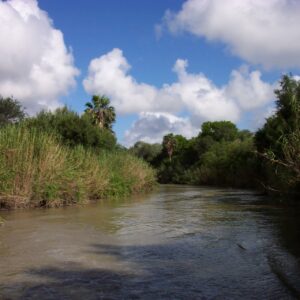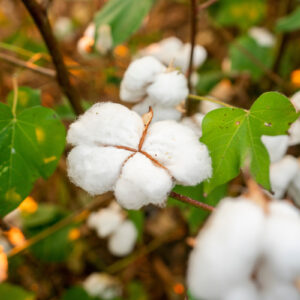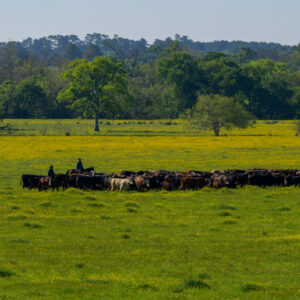TITLE:
Weed Management in Irrigated Cotton Cropping Systems using Roundup Ultra in Roundup Ready Cotton at AG-CARES, Lamesa, TX 2000.
AUTHORS:
Wayne Keeling, Alan L. Helm and, Danny Carmichael, Professor, Research Technician, Research Associate
MATERIALS AND METHODS:
Plot Size: 8 rows X 300’, 3 replications
Planting Date: May 12
Varieties: Paymaster HS26 and Paymaster 2326RR
Systems: Conservation Tillage (40”, Ultra Narrow Row, and Rye-Sorghum-Cotton Rotation) and Conventional Tillage
Irrigation: 12” for season (based on .75 ET)
Application Dates: Preplant Incorporated (PPI)
Conventional TillageApril 15
Conservation TillageApril 15
Preemergence (PRE) May 10
Post-Topical (PT)June 1
Post-Directed (PD)June 23
Harvest Dates: October 1
RESULTS AND DISCUSSION:
Three irrigated conservation tillage cotton-cropping systems were compared to conventional tillage. These systems included; 1) 40-inch rows planted in terminated rye; 2) ultra-narrow row (UNR) and 3) rye-sorghum-cotton rotation (R-S-C). Each system consisted of three weed management systems: 1) Treflan or Prowl (PPI) fb Caparol (PRE) + cultivation + spot spray (Roundup Ultra) + hoe, 2) Treflan or Prowl (PPI) fb Roundup Ultra (PT and PD), 3) Roundup Ultra (PT, PD, and LPT). The initial Roundup Ultra PT application was made at the 3-4-leaf stage in all systems. The PD application was made to all systems except the UNR system in late June. Cotton lint yields were determined and net returns per acre were calculated using all input costs. (Table 1)
Table 1. Comparison of conservation and conventional tillage system cotton lint yields and net returns as influenced by weed management systems at AG-CARES, Lamesa, TX, 2000.
|
System |
Yield
(lb/A) |
Net Returns
($/A) |
| CONSERVATION TILLAGE (40″) | ||
| 1) Treflan fb Caparol + Cultivation | 365 | -86 |
| 2) Treflan Fb Roundup Ultra (PT + PD) | 356 | -87 |
| 3) Roundup Ultra (PT + PD) | 336 | -93 |
| Avg. | 352 | -89 |
| CONSERVATION TILLAGE (UNR) | ||
| 1) Treflan fb Caparol + Cultivation | 419 | -107 |
| 2) Treflan fb Roundup Ultra (PT) | 438 | -72 |
| 3) Roundup Ultra (PT + LPT) | 364 | -96 |
| Avg. | 407 | -92 |
| CONSERVATION TILLAGE
(R-S-C-ROTATION) |
||
| 1) Treflan fb Caparol + Cultivation | 687 | 46 |
| 2) Treflan fb Roundup Ultra (PT + PD) | 692 | 54 |
| 3) Roundup Ultra (PT + PD) | 614 | 39 |
| Avg. | 664 | 46 |
| CONVENTIONAL TILLAGE | ||
| 1) Treflan fb Caparol + Cultivation | 467 | -15 |
| 2) Treflan fb Roundup Ultra (PT + PD) | 621 | -13 |
| 3) Roundup Ultra (PT + PD) | 647 | -19 |
| Avg. | 578 | -16 |
Highest yields were produced in the rye-sorghum-cotton conservation tillage system, where no tillage operation or cover crop moisture use occurred. Windy conditions and blowing sand in May and June did some damage to cotton in the conventional tillage plots. Cotton planted into terminated rye grew off extremely well but appeared to cut-our prematurely due to extreme heat and insufficient irrigation capacity. The conventional tillage plots in which cotton stands were thinned out and set back by early-season condition did not cut-out as early, which resulted in higher yields. Across all systems, the most consistent, effective weed control was achieved with a preplant residual herbicide plus two Roundup Ultra application in-season. Net returns were negative for almost all systems due to below-average yields and prices.
No meaningful data was collected from dryland plots due to lack of rainfall for establishment for rye for either cover or for harvest in the fall of 1999. Cotton was planted in early June and decent stands were established. However, an almost total lack of rainfall from late June through September produced essentially no yields (<50 lbs/A)





